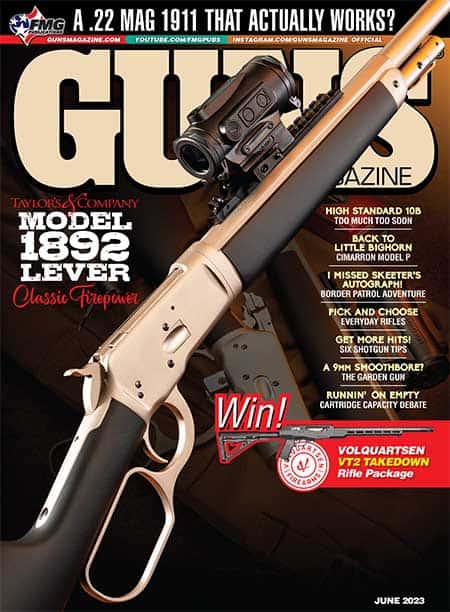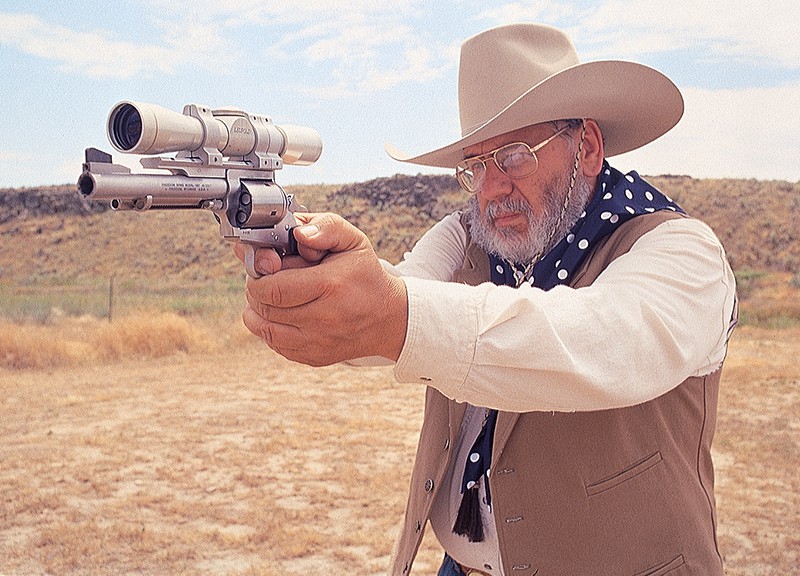The .454 Casull
Just A Better .45 Colt
The .45 Colt is my favorite cartridge. It has everything as far as I’m concerned, including versatility, history and performance. So, it only makes sense to love the Colt’s younger brother too — the .454 Casull! Like a lot of younger brothers (me), the Casull packs more punch. So much so, some find it hard to contain or control. One thing for certain, when touching off a fully-loaded Casull cartridge, it’s akin to holding onto a stick of dynamite at ignition.
However, regular shooting sessions tame the initial shock and power of the cartridge. After a while, you get used to the wildly undisciplined younger brother to the Colt. Handloaders have the advantage of downloading the Casull to Colt-like loads, working their way up the power continuum, as they get used to shooting the big boomer.
A relative newcomer compared to its 150-year-old brother, the Casull has indeed made an impact on the shooting world, especially among hunters and silhouette shooters, as the cartridge that can do it all. Game such as elephant and Cape Buffalo are handily taken by the Casull.
By The Numbers
While .45 Colt handloads and factory fodder can push 300- or 330-grain cast slugs over 1,200 FPS in large-frame Ruger revolvers and equivalent guns, the 454 Casull takes it up a notch or two. Now we have a means of driving 360-grain bullets over 1,400 FPS. Lighter bullets like 260 grains can be driven 1,800 FPS. This is accomplished by using a case 0.10″ longer, having a thicker web and utilizing a small primer pocket for the small rifle primer used for the high-pressure load.
The Beginning
It all started in 1959 when Dick Casull, Duane Marsh and Jack Fullmer experimented to make a “super” .45 cartridge capable of some phenomenal performance and this is what the .454 Casull is all about — performance! Plain and simple. Dick Casull started out using tri-plex loads, three different powders in the same cartridge case, to achieve the results he wanted while getting a full powder burn from his loads. He used Colt SAA with custom 5-shot cylinders to contain the high-pressure load. In 1983 the Freedom Arms revolver came out, going by the moniker Model 83.
Handloads
As stated, the 454 Casull is in a class by itself horsepower-wise but it’s not always necessary to shoot full power loads, especially in the beginning. I currently own five 454 Casull firearms — two Freedom Arms Model 83, a custom BFR, a Ruger Bisley and a Rossi R92 lever gun. These guns handle the recoil and all are very accurate. The one Model 83 is a pre-premier grade with a tungsten throat insert and .45 Colt cylinder.
The tolerances for the Freedom Arms are so tight it is worthwhile shooting .45 Colt loads in a designated cylinder so you can fully chamber a 454 Casull load after shooting. Otherwise you’ll have to get every bit of lead and powder residue out of the chamber to do so.
But let me let you in on a little secret — I only shoot full power loads half the time. That’s right! Especially with the component shortage and prices when you actually can find powder, bullets or primers. But I always use .454 brass to avoid any seating problems later.
A favorite light load consists of a Lee 255-grain RF loaded over 12.4 grains of 231. This pushes the slug over 1,200 FPS and with good accuracy. The next load uses RCBS 270 SAA loaded over 10 grains of 231 for around 1,000 FPS.
Heavier loads utilizing the RCBS 300-grain SWCGC loaded over 30 grains of H110 and sparked with a CCI 350 magnum primer exceeds 1,600 FPS with fine accuracy. My heavyweight load uses a home-cast LBT LFNGC design weighing 330 grains. Loaded over 26 grains of H110 propels this slug over 1,400 FPS and is a favorite hunting load.
Shoot Smarter
As you can see, the 454 Casull is just more of a good thing than the .45 Colt and that’s saying a lot! It can be loaded much hotter than the Colt while still being able to downshift a bit for enjoyable pleasure-cruise velocities. With versatility like that, you could easily be a one-gun hunter. But what fun would that be?








